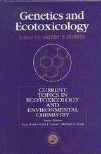Papers in the Biological Sciences

Valery Forbes Publications
Document Type
Article
Date of this Version
1-2012
Abstract
Increasing use of engineered nanoparticles (NPs) is likely to result in release of these particles to the aquatic environment where the NPs may eventually accumulate in sediment. However, little is known about the potential ecotoxicity of sediment-associated engineered NPs. We here consider the case of metal oxide NPs using CuO to understand if the effects of NPs differ from micron-sized particles of CuO and aqueous Cu (CuCl2). To address this issue, we compared effects of copper added to the sediment as aqueous Cu, nano- (6 nm) and micro- (μm) CuO particles on the deposit-feeding snail, Potamopyrgus antipodarum. Effects were assessed as mortality, specific growth rate, feeding rate, reproduction, and bioaccumulation after 8 weeks of exposure to nominal concentrations of 0, 30, 60, 120 and 240 μg Cu/g dry weight sediment. The results demonstrate that copper added to sediment as nano-CuO had greater effects on growth, feeding rate, and reproduction of P. antipodarum than copper added as micro-CuO or aqueous Cu. P. antipodarum accumulated more copper in the nano-CuO treatment than in aqueous Cu or micro-CuO treatments, indicating that consideration of metal form may be important when assessing risks of metals to the aquatic environment.


Comments
Published in Aquatic Toxicology 106-107 (January 15, 2012), pp. 114-122; doi: 10.1016/j.aquatox.2011.10.005 Copyright © 2011 Elsevier B.V. Used by permission.